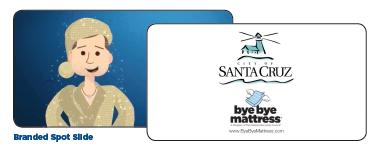Rob Whittle, our President & CEO, recently wrote this:
I will stipulate that PSAs are not for everyone. But many nonprofits that could benefit from raised visibility have not looked into the millions of dollars of free media time available to them.
As one who spent most of his career in marketing commercial ventures, I know that, by far, the most expensive line item in a marketing budget is the cost of media. Many years ago, conducting our first PSA campaign, I was stunned at the free opportunities that were available to 501c3 organizations. That first campaign netted over $10 million in free media to a cause that had never tried PSAs before (over time, they reached $150 million + in a single year).
Since then, we’ve conducted dozens of PSA campaigns for organizations large and small, and I’m still astonished at the munificence available to 501c3 organizations by TV, radio, online and print outlets across the country. True, it takes a carefully planned effort in both the messaging and outreach sides of the equation, but the benefits are there for any organization that wants them.
My strong advice to any organization that wants to raise its profile dramatically is that you look into the benefits of a PSA campaign.
Rob makes good points about the amount of media value available to nonprofits; of which many may not even be aware. It also got me thinking about the internal (both personal and/or within marketing teams) debate over whether or not to pursue PSAs within your media mix. Most organizations would not argue with increased awareness. But, it’s typically the funds that can get you caught up; sometimes it’s simply a matter of whether you have them or not.
If you’re wrestling with whether it’s the right decision to allocate your marketing budget to a PSA, here are the top ways a PSA program brings value to your cause:
1. From an integrated standpoint, PSAs do the heavy lifting.
Reaching millions of people with your message can be an extremely expensive proposition. Paid media is efficient because you can aim your message at your target audience. It is, however, prohibitively expensive to do it correctly. (As we often say, if you had the money, you still would not spend it on purchasing media.) Most of the other channels—SEO, social media, events, direct mail, paid search—are not only viable, but they are also recommended as part of a multi-platform communications program. Not one of them alone—or even all of them together—can produce the potential reach of a PSA program. So, of all the strategic choices, a PSA program, in partnership with other channels, is the most cost-effective outreach program.
2. PSAs help elevate a consistent brand message, especially if it’s done in concert with other media.
Multi-channel campaigns turn a series of messages into a story—the media is connected together by using consistent imagery, the same voice and one singular call to action. And with the PSA on the airwaves (via TV and radio), it’s a powerful way to tell your story.
3. While you can’t ask for donations in PSAs, it does balance out your giving requests.
On a PSA creative, you can ask the public for “help” or to “join”, or to “learn”, but you can’t ask them to “give” or “donate” to a cause. You can read more about what can and can’t say on this blog. Having a friendly, non-direct message balances the many fundraising requests that consumers get all year from your nonprofit. It protects your brand from giving fatigue – you don’t want the public to think that all you do is ask, ask, ask.
4. A PSA with national reach gives you control over what is said about your nonprofit (in more than a local way).
So much of what is said in the media is uncontrollable. And sometimes your local representatives create their own materials that don’t echo your marketing efforts. So, to protect and strengthen the brand, a PSA can offer a controlled, consistent message to the largest audience you can reach (for free!)
To control the local approach a bit more, our client, the Mattress Recycling Council provided local counties in California the opportunity to include a tag at the end of their Illegal Dumping PSA. This was a way to provide each county a personalized spot, while still using the same PSA creative.

5. If your message isn’t competing for PSA space, other nonprofits surely are.
As Rob said, PSAs are a resource that every nonprofit should take advantage of. The media will always run PSAs, so if your nonprofit isn’t in the “mix,” you are giving up your place in the market. Others will happily take your place.
6. It provides all of your stakeholders with a valuable resource and a platform to share the message.
From board members to development staff to local representatives, they are all hungry for resources to help them share your nonprofit’s mission, message, etc. A high-quality PSA is a video tool that can be used in all areas of the org: social media, fundraising, presentations, etc.
Now, you may be wondering why one of the reasons above is not “a PSA will provide you free media.” Yes, the running of your spots will be free (yeah!), but that is not a reason to pursue PSA as a viable media channel. It’s simply one of the reasons why PSAs are unique to nonprofits – they are specifically reserved for nonprofits that have messages intended to change the public interest by raising awareness of an issue, affecting public attitudes, and stimulating action.
Every year we conduct a PSA director survey to get insights directly from the source. We ask questions about their preferences – how do they prefer to receive creative? Do they prefer to air local or national PSAs? What length is preferred? When do they prefer to receive the creative? It’s a very thorough survey that allows us to strategize better for our clients. You can read the most recent survey results here.
Have I spurred your interest in PSA? Contact us to help your nonprofit organization create your next PSA.
.


